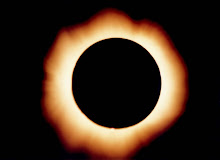My group did a presentation on social networking and, through it, I learned of the many different ways in which social networking could be used. Of course, the obvious social network sites exist, such as Facebook and Myspace. However, during the course of our research, we also discovered sites like Friendster, SecondLife, and Last.Fm which are all used in interesting ways. SecondLife is more of a virtual world, where people can create avatars and talk. Last.fm is a music orientated social networking site in which a person can "scrobble" their songs and Last.fm will then make recommendations based on what other users who listen to the same songs as you do also listened to. I also learned about the history of social networking and the ways in which social networks could connect people. It was also interesting to discover the ways in which social networking sites could use your personal information in ways you may not have wanted. Below is the presentation my group made for this assignment:
Social networks are important to understand/use because they will, in the future, become even more vital than they are now. Social networking, in its most basic form, is a way to connect people who may not know each other or who may not have seen each other in a while. To that end, all social networks provide ways for a person to make "friends" on the site, either through matching the people directly through shared likes or providing ways for people to chance upon each other. Social networks also provide ways to instantaneously communicate, such as status updates, or more private avenues of communication such as e-mail built directly into the website. These skills will be needed in the coming years because people will need to know how to communicate with those they may not know quickly and efficiently and to find those they need to find.
The common theme that ties the different projects together (social networks, social bookmarking, wikis, and RSS feeds) is the fact that the user, the individual is now in charge of the information they view and consume. In days past, the news agency or company presented the information to the viewer and the viewer could then choose which of that information they wanted to read. There was some form of choice in this, but not much. The technological age brought about a deluge of information where people have so much information that news agencies are now catering to the individual. The person can now choose not only what they want to read, but when they want to read it (by using archives) and who they want to read it from. It the New York Times does not have the information a person wants, they can be at the Washington Post's homepage in less than ten seconds. The power of knowledge is now in the hands of the people. Let's hope we can figure out what to do with it before we self-destruct.
Hello world!
4 months ago

Colin, It seems to me what you are identifying is the very real 21st century shift away from scarcity of information to abundance of information. So it's no longer a matter of having information that determines success, but how to most effectively use it. The Internet has made "knowledge" available to anyone. Those who thrive are those who can get through the clutter and use it most effectively.
ReplyDeleteHere's an interesting article about dark on white text schemes:
ReplyDeletehttp://www.456bereastreet.com/archive/200608/light_text_on_dark_background_vs_readability/